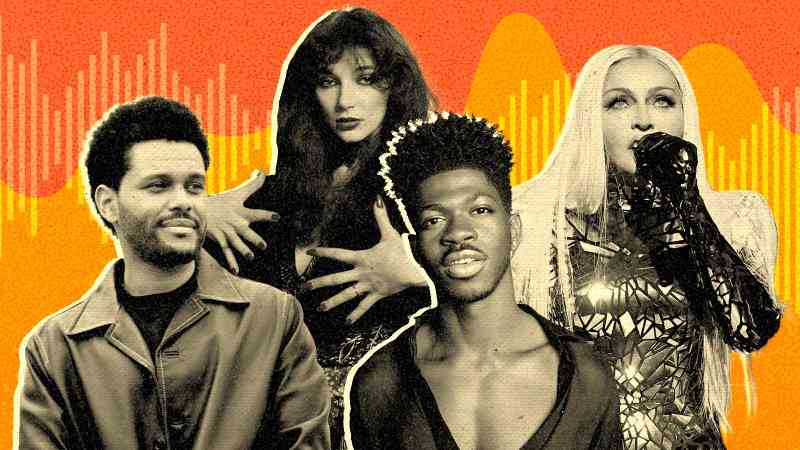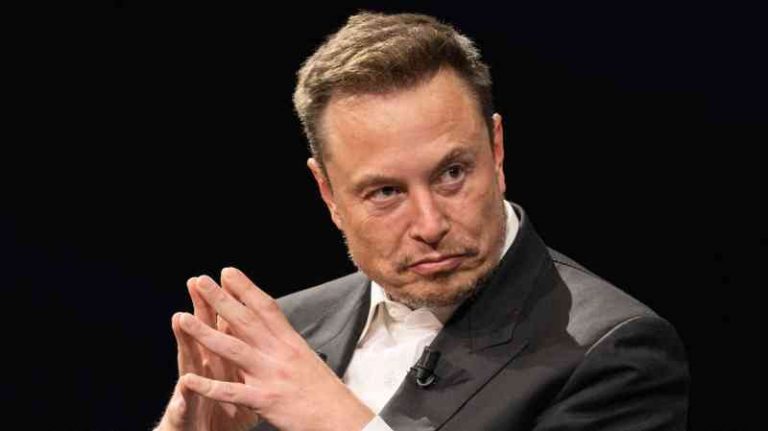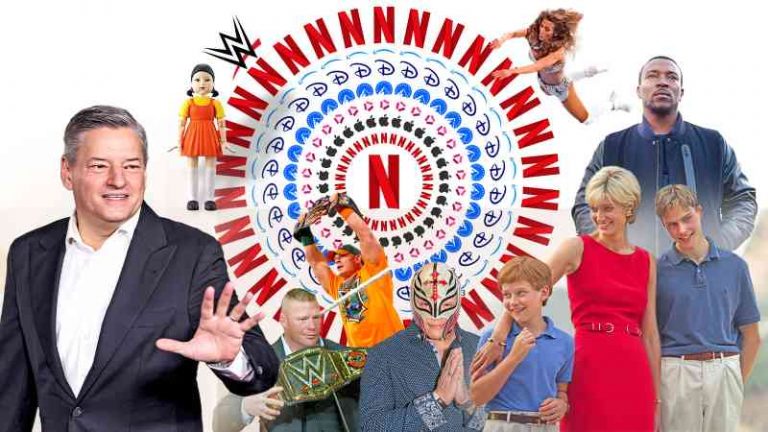The ever-shrinking song: how TikTok is transforming music
Nathan Evans might still be a postman were it not for TikTok. The Scot went viral on the social media app in 2020 for his take on a traditional sea shanty, and has racked up more than 22 million views of Wellerman to date on TikTok. He landed a record deal and scored a No 1 single that has had more than 300 million views on YouTube.
“It opened a million doors for me,” says Evans. “Without TikTok, being in the music industry would never have happened for me. It has given me so many opportunities. One video changed my life.”
Evans, 29, is a prime example of the enormous sway that the Chinese-owned social media app now has over the music industry. TikTok, with its almost two billion users scrolling through videos, has become the place for fledgling artists to showcase their talent and for established stars to push their songs to receptive audiences.
While Evans can toast his success, TikTok’s dominance over the music industry also raises serious questions. Despite its user base, the company pays a relative pittance in royalties to record labels and artists. Meanwhile, the very structure — and arguably the quality — of music made today is being torqued to suit the snappy virality of TikTok’s algorithm. Everything is changing at warp speed. Hits are getting shorter; nowhere is this more apparent than at this weekend’s Grammy awards, where one fifth of the nominated songs run for less than three minutes.
An industry fightback against TikTok is now under way and seems likely to be bitter. Evans, and many singers like him, are in limbo this weekend because his record label, Universal, is in dispute with the app over how much it should be paid for the use of its artists’ music.
Universal, which includes the likes of Taylor Swift and The Weeknd on its roster, accused TikTok of trying “to intimidate us into conceding to a bad deal that undervalues music and shortchanges artists and songwriters as well as their fans”. TikTok, which is owned by Beijing-based ByteDance, shot back and said Universal was “putting their own greed” above the interests of their artists.
The economics of TikTok are rather unusual. Unlike streaming services such as Spotify and the likes of Meta, the owner of Instagram and Facebook, TikTok does not pay labels — and, by extension, artists — for each use of a song on its platform. Instead, it has agreed deals with record companies under which, for a flat fee, its users can use as much music from artists as they like. Universal’s deal lapsed on January 31, and bosses of other labels are waiting to see who blinks first before deciding what they do next.
The current arrangement means that singers are not paid extra by TikTok when their songs go viral. For example, Kate Bush became a TikTok sensation in 2022 when her 1985 hit Running Up That Hill (A Deal With God) was used in the Netflix series Stranger Things. Although almost two million videos, viewed more than five billion times, using the song have since appeared on TikTok, she has not earned any extra money from the app.
TikTok paid a mere $220 million (£173 million) to the music industry for the use of songs in 2022, out of its $9.4 billion revenue. According to a Goldman Sachs report, this was less than Peloton, the exercise and media company, which paid $267 million in royalties, even though it only has seven million users.
Despite the relatively meagre sums on offer directly from TikTok, such is its viral potency that no aspiring musician can afford to ignore it. One music manager says that he has an offer from Universal for a young new artist but is leaning towards turning it down because it would be too difficult for her to get traction without being able to use the app. “I have to break this artist and if I can’t put her on TikTok, I can’t do it,” he says.
The app has even impacted artists and repertoire (A&R) teams, who are responsible for scouting and developing talent, at the biggest labels. Most of the large labels have dedicated teams to monitor TikTok and try to engineer a hit — often without success. “A&R meetings are just people sitting around looking at data points,” says one leading artist. “It is really, really bleak.”
The result of all this analysis is the changing shape and structure of songs themselves. Popular music is increasingly tailored to short social media attention spans. Many of the most popular songs on apps such as TikTok start with choruses or short introductions, while devices such as the middle eight and bridge — such as when the Beatles sing “Life is very short …” in We Can Work it Out — are waning.
This year is on course to have the shortest average song length in the top ten of the charts since 1966, according to a Sunday Times analysis, with the mean currently at 2 min 54 sec. At this weekend’s Grammys, about 20 per cent of nominated songs clock in at less than three minutes, according to research by The Washington Post — they include Midnight Rain by Taylor Swift and Nicki Minaj’s Barbie World.
Joe Bennett, a forensic musicologist and professor at Berklee College of Music in Boston, Massachusetts, says that songwriters are not consciously deciding to write shorter songs, but have stumbled upon it as a way to thrive.
“It’s more akin to a Darwinist ecosystem: the songs that become popular exhibit those characteristics,” he says. “Those are the songs we hear about and they are the songs that culturally propagate. Some songwriters might still be cheerfully writing longer songs, but we’re just not hearing them as much.”
The death of the middle eight, made famous by the likes of Bruce Springsteen’s Born to Run and Good Vibrations by the Beach Boys, is lamented by some. “It saddens me that pop is less harmonically interesting and the structures have become simpler with the near elimination of the middle eight,” says Tom Gray, singer of the indie band Gomez. “The medium has always dictated the art — if you don’t like the direction of the art, you do have to wonder about the medium.”
Music distribution technology has long affected what sort of songs artists produce. The original charts, in the 1930s, were based on sales of sheet music for pianos. In the 1950s, songs were mostly less than three minutes long because of the constraints imposed by vinyl technology.
The dawn of cassettes and, later, CDs gave artists in the 1970s the opportunity to be more experimental, with Donna Summer’s I Feel Love clocking in at 5 min 56 sec. The trend continued in the 1980s, and George Michael hit 6 min 30 sec when he released an extended mix of Careless Whisper in 1984. The trend for longer songs peaked in the mid-1990s, with Meat Loaf’s I’d Do Anything For Love (But I Won’t Do That) clocking in at 7 min 42 sec.
The rise of Napster and, later, Spotify caused a decline in song lengths that continues today, especially as artists only get royalty payments from streamers if listeners play songs for at least 30 seconds. The TikTok ascendancy has helped to drive lengths lower still: Tate McRae’s Greedy is in the Top 10 this year and is just 2 min 12 sec long.
TikTok virality is all very well when it works and can be translated into sustained success, but most music uploaded on the app goes unnoticed and most musicians in Britain still earn a pittance from their work. The Musicians’ Census, a survey of almost 6,000 artists in the UK last year, found that the average annual income of musicians is £20,700.
For the rest of us, the TikTokification of music makes it difficult to imagine mega-ballads such as Queen’s Bohemian Rhapsody or Guns N’ Roses’ Paradise City becoming definitive anthems today. When he teaches in Boston, Bennett says that protracted prog-rock is still alive among his students, but as more of a niche pursuit. Still, he remains optimistic. “One thing’s for sure: pop songs can’t keep getting shorter for ever,” he says. “This has got to bottom out at some point. When that happens, the only way is up.”






